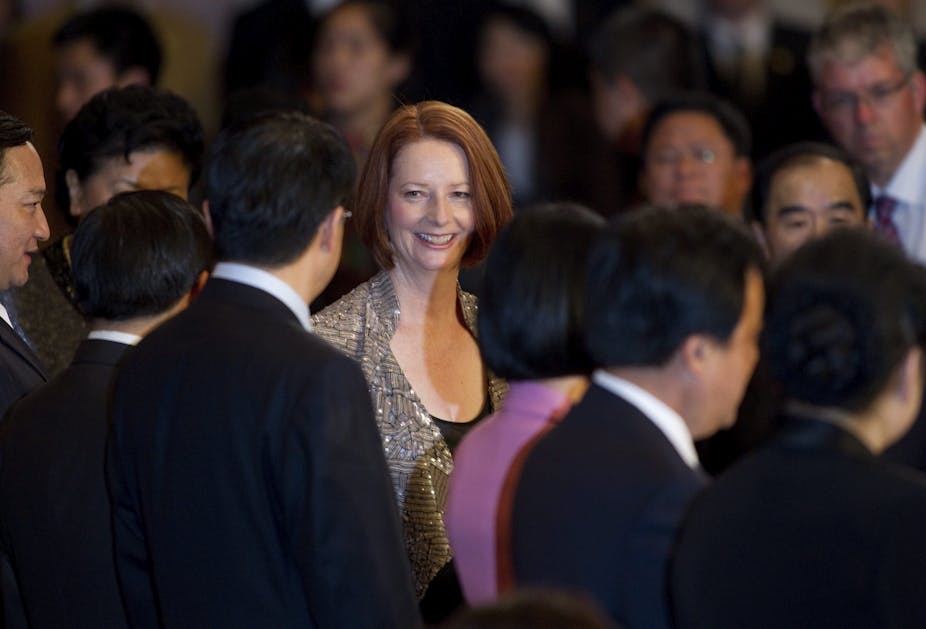The Australia in the Asian Century White Paper has vaulting ambitions equally matched by a limited set of policy ideas for institutional reform.
Unlike Ross Garnaut’s 1989 report, Australia and the Northeast Asian Ascendancy, which served a menu of economic reform, the white paper is constituted as a “road map” directed at changing the institutional culture of social, economic, and educational institutions for the Asian century.
But it neglects the real and thorny political choices needed to create the “fair and prosperous society” proposed within its pages. Such a society is a laudable objective and the report is a timely recognition that it is not economic growth alone, but inclusive economic growth that matters. Indeed, the report sets out what you could call a social-democratic model for Australia’s post-industrial economy in the Asian century. But how do we get there?
On this issue, the report is disappointing. Institutional reform is the key to the Asian century, but this boils down to technocratic engineering: making institutions more capable or literate. According to the report, the crucial problem is one of cultural adaptation, and only echoes the old slogan of “Asian literacy”, under the garb of “Asia capability”.
Taking the high road to prosperity in Asia requires the right structural incentives, the capacity to discipline institutions and — above all — an investment in public goods. For example, the report’s authors claim that ANZ is an “Asia-capable institution”, but is this enough to drive ANZ to invest in higher levels of training for their staff, or to contribute to feeding and funding innovation?
Similarly, speaking Mandarin or Hindi is not going to make us an innovative nation, or even understand the region better. In this regard, the report also ignores the cultural capabilities and resources that already exist within our pluralistic society. Let me take the area of education. There is much in the report about internationalisation, and giving students greater exposure to Asian languages based on the naïve assumption that communication skills will lead to cultural competence. But none of this will lead to the “globalisation” of educational institutions, or promote research collaboration with Asian institutions.
The white paper seems to neglect the growing shift of knowledge to Asia, the growth of research universities in the region – in China, Korea and India – and the need to build strategic alliances and collaboration with these research institutions. Despite all its exhortations to be “Asia capable”, the white paper appears to have a simplistic view of Asia as a manufacturing platform. And here is the rub: public goods are needed to create, facilitate, and develop collaboration with Asia.
One elephant in the room – though there seems to be a veritable elephant park in the white paper – is fiscal austerity. Over the next decade, fiscal constraints will mean that driving innovation and knowledge for the Asian century will be limited. This means that if we are serious about creating a knowledge economy, we need to face issues of tax reform as well as novel solutions such as the use of super funds to invest in innovation.
One gets the feeling that the Henry tax review probably had more relevance for the Asian Century. But all of this requires serious, hard political choices that the report ducks.
The related point here is that the “cultural adaptation” argument invariably refers to a region “out there”, rather than seeing Australia as a part of the region. For example, one of the great benefits of research and strategic collaboration with the region is that we can partner with Asia to confront the societal and scientific challenges confronting all of us in the region. If we do really want to take the high road to Asia, we need to see the region as part of us — and not a canvas on which to etch out our particular vision of prosperity.
Just as we make political choices, the direction and patterns of growth in Asia will also be shaped by political choices in places like China. We need to be conscious of the fact that the growth model in China is tied to the US. With low growth for the foreseeable future in the US, this places lot of pressure on the export model upon which Chinese growth is pinned. What are the political pressures involved in China shifting to a new growth model, and what are its implications for Australia? A report with a different intellectual frame is needed to comprehend and confront the institutional reforms here and in the region.
The Asian Century white paper sets out the major question for the next decade: How do we get to the high road of innovation and productivity in the Asian Century? This is a laudable objective, but we need more work on the policies to get us on that road in the first place.

